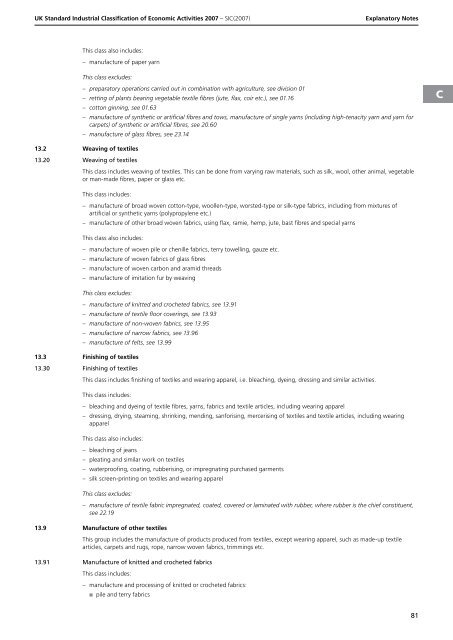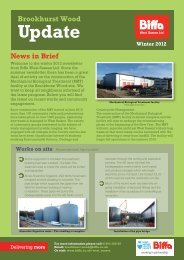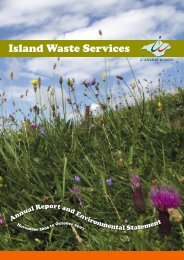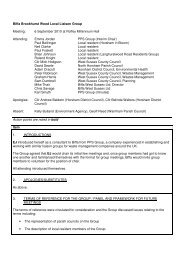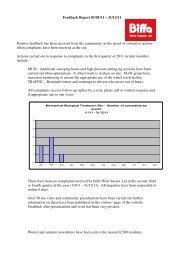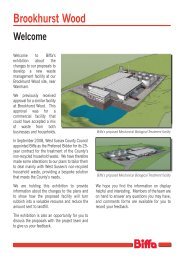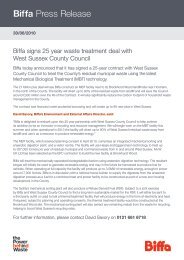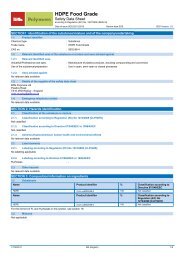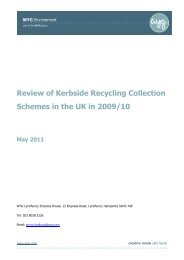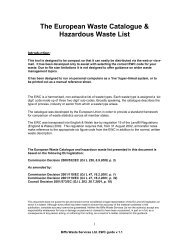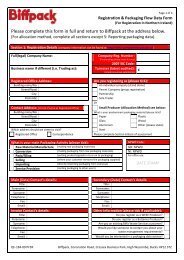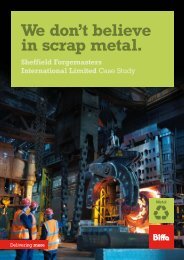detailed explanation for each SIC code - Biffa
detailed explanation for each SIC code - Biffa
detailed explanation for each SIC code - Biffa
Create successful ePaper yourself
Turn your PDF publications into a flip-book with our unique Google optimized e-Paper software.
UK Standard Industrial Classification of Economic Activities 2007 – <strong>SIC</strong>(2007)<br />
Explanatory Notes<br />
This class also includes:<br />
–<br />
manufacture of paper yarn<br />
This class excludes:<br />
–<br />
–<br />
–<br />
–<br />
–<br />
preparatory operations carried out in combination with agriculture, see division 01<br />
retting of plants bearing vegetable textile fibres (jute, flax, coir etc.), see 01.16<br />
cotton ginning, see 01.63<br />
manufacture of synthetic or artificial fibres and tows, manufacture of single yarns (including high-tenacity yarn and yarn <strong>for</strong><br />
carpets) of synthetic or artificial fibres, see 20.60<br />
manufacture of glass fibres, see 23.14<br />
C<br />
13.2 Weaving of textiles<br />
13.20 Weaving of textiles<br />
This class includes weaving of textiles. This can be done from varying raw materials, such as silk, wool, other animal, vegetable<br />
or man-made fibres, paper or glass etc.<br />
This class includes:<br />
–<br />
–<br />
manufacture of broad woven cotton-type, woollen-type, worsted-type or silk-type fabrics, including from mixtures of<br />
artificial or synthetic yarns (polypropylene etc.)<br />
manufacture of other broad woven fabrics, using flax, ramie, hemp, jute, bast fibres and special yarns<br />
This class also includes:<br />
–<br />
–<br />
–<br />
–<br />
manufacture of woven pile or chenille fabrics, terry towelling, gauze etc.<br />
manufacture of woven fabrics of glass fibres<br />
manufacture of woven carbon and aramid threads<br />
manufacture of imitation fur by weaving<br />
This class excludes:<br />
–<br />
–<br />
–<br />
–<br />
–<br />
manufacture of knitted and crocheted fabrics, see 13.91<br />
manufacture of textile floor coverings, see 13.93<br />
manufacture of non-woven fabrics, see 13.95<br />
manufacture of narrow fabrics, see 13.96<br />
manufacture of felts, see 13.99<br />
13.3 Finishing of textiles<br />
13.30 Finishing of textiles<br />
This class includes finishing of textiles and wearing apparel, i.e. bl<strong>each</strong>ing, dyeing, dressing and similar activities.<br />
This class includes:<br />
–<br />
–<br />
bl<strong>each</strong>ing and dyeing of textile fibres, yarns, fabrics and textile articles, including wearing apparel<br />
dressing, drying, steaming, shrinking, mending, san<strong>for</strong>ising, mercerising of textiles and textile articles, including wearing<br />
apparel<br />
This class also includes:<br />
–<br />
–<br />
–<br />
–<br />
bl<strong>each</strong>ing of jeans<br />
pleating and similar work on textiles<br />
waterproofing, coating, rubberising, or impregnating purchased garments<br />
silk screen-printing on textiles and wearing apparel<br />
This class excludes:<br />
–<br />
manufacture of textile fabric impregnated, coated, covered or laminated with rubber, where rubber is the chief constituent,<br />
see 22.19<br />
13.9 Manufacture of other textiles<br />
This group includes the manufacture of products produced from textiles, except wearing apparel, such as made-up textile<br />
articles, carpets and rugs, rope, narrow woven fabrics, trimmings etc.<br />
13.91 Manufacture of knitted and crocheted fabrics<br />
This class includes:<br />
–<br />
manufacture and processing of knitted or crocheted fabrics:<br />
■ pile and terry fabrics<br />
81


